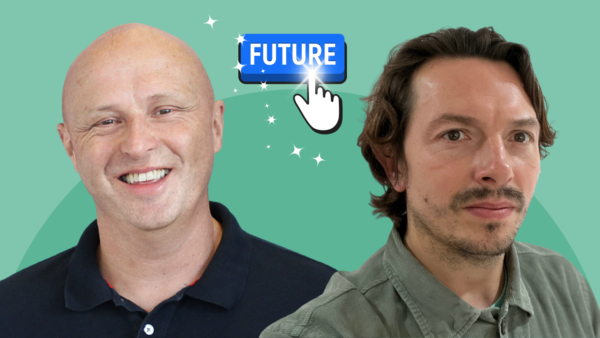Are you in the right place? The answer is yes if you’ve ever been close to recruitment
Do you work in recruitment or talent acquisition, or in a broader HR role with responsibility for recruitment? Then today’s episode is for you. Actually, if you’ve ever applied for a job or participated in an assessment centre or development centre or you may do so in the future, this episode is for you too. Oh and if you’re interested in the strengths approach and how it can create a fairer, less biased, more open and relaxed recruitment process, then this episode is also for you.
Have I got your attention? Still with me? Ok, so today I want to discuss the dangers of social desirability. Otherwise known as ‘faking good’ or ‘impression management’. Otherwise known as not being entirely honest during a recruitment process. We all know that social desirability, faking good and impression management are real. These are effects we see all the time in the real world. Particularly in a so called ‘high stakes’ situation in our work lives or in our non work lives.
So what is impression management, faking good and social desirability then?
Some examples: going on a first date, meeting someone who’s really important to your partner, taking an oral exam…which brings us to…applying for a job. In these situations, internally we’re in somewhat of a tense spot, we’re probably experiencing some kind of internal conflict. What if the person doesn’t like us, what if we don’t measure up, what if we don’t deliver what they’re looking for? And so in those situations, we might adopt characteristics that aren’t completely, authentically us. Instead, we’re actively managing the impression we make, we’ve perhaps done our homework on what we think the person might like to hear, what they might appreciate most (and least) about us. And we go into the situation with all that in mind, to give ourselves the best chance of it all going well.
In the case of recruitment situations, this can lead to a big challenge for people ‘assessing’ candidates for their fit with the role, team or organisation (which is basically everyone involved in a recruitment decision). Because who are they really meeting? If someone’s done all their homework on the skills, experience and competencies needed to do a job well…and let’s be honest, most of that information will be in the job ad and/or role description, is it any surprise that the interviewers or assessors will see candidate after candidate turn up almost as the perfect templated fit to the job description, rather than as the messy, real, authentic human that each person actually is.
How do you know that your candidate is being honest? Are social desirability scales the answer?
This also presents a challenge for people who design assessment tools, like personality-based psychometric tests, because what’s to stop people from ‘faking good’ that they have all the attributes that a candidate assumes will be needed to deliver both the what and the how of the role. So psychometric test designers have got wise to this and some build in ‘social desirability’ scales as a way of identifying whether someone has responded to their assessment in ways that are just too unlikely or too good to be true. For example, if you respond ‘strongly agree’ to the questionnaire item, ‘I like everyone I know’, you may have fallen foul of the social desirability screening trap. Because actually, do you REALLY like EVERYONE you know? So went the thoughts of the questionnaire designers. And so, along with someone’s psychometric test profile, assessors might also receive a social desirability rating that would indicate whether the test designer thinks that your candidate has been more or less honest in responding to the questions.
But this brings its own challenge. Because some people really DO like everyone they know. They may not know that many people for example, or they may just believe that on balance they do like everyone they know, or they may not have fully thought about the question before they answered. So we end up trying to catch people out with hidden traps. And once we’ve seen a high social desirability rating on a psychometric test, might that then influence the way we assess someone’s presentation exercise or interview. So in the process of trying to assess whether someone has been biased in their answers, we inadvertently become biased in the way we see them. Both outcomes lead to error in our assessment of a candidate and both may lead us to make dodgy judgements on candidate fit for a role.
So is there a different way to get a more accurate picture of the whole candidate, warts and all?
So how about flipping the problem and instead of trying to catch people out, what about trying to make people as comfortable as possible to show up as more of themselves during a recruitment process? Welcome to strengths in recruitment.
Stop me if you’ve heard this one but I’d love to tell you about some executive recruitment experiences I had a while back, when I first started to use Strengthscope in recruitment. Picture the scene: I’m an Occupational Psychologist, trained in using objective assessment methods, with years of experience of exec level recruitment. And I’m being asked to identity potential derailing behaviours in leaders that I’m interviewing. So I get trained to use the Hogan Development Survey – well-known as a pathology-based assessment tool that uncovers the darkest shadow-side of leadership tendencies. Not unexpectedly, it’s pretty hard to use. You’re trying to get under the skin of a candidate primed to give the best possible impression of themselves in order to get the job. And they’ve been around the block too, through many a recruitment process, so they’re really good at it. So when I’m talking through the results to their results with them with them (Hogan Development Survey is shorthanded to Hogan Dark Side BTW) and it includes elements like Mischievous, Sceptical, Excitable and Leisurely, I get some really common comments. ‘Oh, I used to be like that but I’m not any more’, ‘No I don’t relate to that, I’m not sure how that’s come out’ and so on. And I can feel candidates ‘bristling’, closing down, going on the defensive as they sense an attack. One where the ‘psychologist’ is trying to trap them into saying something that may reduce their chances of getting the job. I work to get more detail from them, and I do, but it’s hard work, really hard.
How can you get more from your search for the shadow side in recruitment?
So I come up with an idea: why not preface the Hogan Dark Side feedback interview with a conversation about their Strengthscope report? That might warm them to the idea that they have strengths – qualities that energise them and which they’ve likely become skilled at using – and that with strengths come risks. Even derailers. And that that’s ok. So I give it a go. And that was when magic happened. Me and the candidate would start off talking about their Top 7 strengths and which of those defined them at their very best. How they had used their strengths to deliver value in previous roles. And then we moved on to talking about strengths in overdrive – where the energy you have for something runs away with itself and leads to unintended consequences. And candidate eagerly chatted through examples of where they’d allowed their strengths to go too far, what they’d learned from the experience and how they’d developed strategies to mitigate the risk. Or in some cases, they gave multiple examples of the same strength in overdrive without the learning and with no risk mitigation strategies. All super helpful stuff from an assessment point of view. And they’re relaxed, again visibly happier and more open in the way they are describing themselves at their best and most energised as well as when that energy has become overwhelming.
And then when I move from the Strengthscope conversation to the Hogan Dark Side debrief, the magic is that…in the vast majority of cases, they’re owning all the risk areas identified by the HDS. Rather than saying ‘That used to be me but I’m all right now’, instead they’re saying ‘Yep, that’s a fair point, I do have that tendency sometimes.’ And they’re giving me examples too.
What a revelation. I keep going with this strategy and it happens time after time, client after client, executive after executive. Putting strengths first in the process puts people at their ease, allows them to talk about themselves at their best, in flow and engaged and happy in their work. And that affirmation that they actually have positive qualities, that I’m not trying to catch them out, I just want to hear about who they are as a leader, light and dark, warts and all, allows them to talk openly about the more challenging stuff. Which leads to a much more accurate picture of what they will bring to a role.
How can you get more from your recruitment process to give you more accurate candidate data? Can strengths be an answer?
OK, story over. So how can you get more from your recruitment process, whatever the context? Well whether you’re recruiting graduates or early careerers, entry level candidates, middle managers, execs, or whether you’re using interviews, assessment centres, whatever the approach you’re taking, my advice is to introduce strengths early to the conversation if you want to get candidates feeling more comfortable and at ease with your recruitment process. If you want them to give a more accurate, authentic and true picture of themselves in this high pressure, high stakes environment.
And there are lots of ways you can do that, in addition to the example I’ve given of structuring your feedback process so that you put strengths first. For example we have a product that can be used by candidates of all levels – StrengthscopeInterview – that they complete before the recruitment process, which allows them to get a clear picture of their strengths, and gives them a chance to prepare beforehand to talk about them at their best and how they’ve delivered value through their strengths in previous roles. Using this or the full Strengthscope report can be a proper game changer when it comes to avoiding social desirability and faking good in recruitment, because when you introduce strengths, you’re enabling the candidate to paint a more authentic, truer picture of themselves and that will get you a much better outcome from your recruitment process. In fact, some research we did with a client recently showed that 90% of hiring managers reported benefits in their decision making as a result of using StrengthscopeInterview. Do get in touch with the team if you’d like to know more – we’re excited to tell you more!










